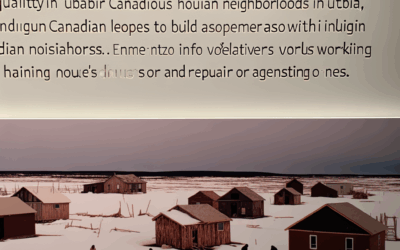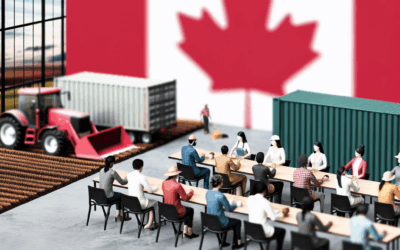Canada is often celebrated as one of the world’s most multicultural nations, with a diverse population that includes people from virtually every corner of the globe. However, this diversity also brings unique challenges related to integration and multiculturalism. While Canada’s commitment to inclusivity and the celebration of cultural differences is commendable, ensuring that all communities feel equally represented and supported remains an ongoing struggle. Issues such as systemic barriers, cultural misunderstandings, and socioeconomic disparities often hinder the full integration of immigrants and minority groups. This article delves into the complexities of multiculturalism in Canada, exploring the challenges faced by both newcomers and long-standing residents, as well as the strategies being implemented to foster a more cohesive and inclusive society.
The Foundation of Canadian Multiculturalism
Canada’s multiculturalism policy, officially adopted in the 1970s, was designed to promote cultural diversity as a fundamental part of the national identity. This policy encourages the preservation of cultural heritage while fostering mutual respect among different communities. However, the implementation of this ideal has not always been seamless. Many immigrants and minorities face challenges in navigating Canada’s social and economic systems, often struggling to find employment that matches their qualifications or to gain recognition for their cultural contributions. Despite the policy’s noble intentions, gaps between different communities persist, highlighting the need for more effective integration strategies.
Systemic Barriers to Integration
One of the most significant challenges to integration in Canada is the presence of systemic barriers that disproportionately affect immigrants and minority groups. For example, foreign credentials are frequently undervalued, leaving many highly skilled professionals underemployed. Additionally, language barriers, particularly for those who do not speak English or French fluently, can limit access to education, employment, and social services. Discrimination, whether overt or subtle, further exacerbates these issues, making it difficult for many individuals to fully participate in Canadian society. Addressing these systemic challenges requires comprehensive reforms in areas such as credential recognition, language training, and anti-discrimination policies.
Cultural Misunderstandings and Stereotypes
Despite Canada’s multicultural ethos, cultural misunderstandings and stereotypes remain prevalent. Misconceptions about certain communities can lead to social exclusion and perpetuate harmful biases. For instance, visible minorities may face stereotypes that affect their interactions in the workplace or public spaces. These misunderstandings often stem from a lack of cultural awareness and education. To combat this, initiatives that promote cross-cultural dialogue and understanding are essential. Programs that encourage Canadians to learn about different cultures and traditions can help bridge the gap between communities and foster a more inclusive society.
The Role of Education in Fostering Inclusion
Education plays a pivotal role in promoting multiculturalism and integration. Schools and educational institutions are ideal settings for teaching students about diversity, equity, and inclusion. By incorporating multicultural perspectives into the curriculum, Canada can nurture a generation that values and respects cultural differences. Furthermore, providing language support and cultural orientation programs for newcomers can ease their transition into Canadian society. Investing in education is not only a way to address current challenges but also a long-term strategy for ensuring that future generations embrace multiculturalism as a core value.
Community Support and Grassroots Initiatives
Grassroots initiatives and community organizations are at the forefront of efforts to promote integration and multiculturalism in Canada. These groups provide essential services such as language classes, employment support, and cultural events that help newcomers feel more connected to their new home. They also play a crucial role in advocating for the rights of marginalized communities and raising awareness about the challenges they face. By supporting these initiatives, both the government and private sector can contribute to building a more inclusive society where everyone has the opportunity to thrive.
A Vision for the Future
Canada’s multicultural identity is both a source of strength and a work in progress. While the challenges of integration and multiculturalism are complex, they are not insurmountable. By addressing systemic barriers, fostering cultural understanding, and investing in education and community support, Canada can continue to build a society where diversity is truly celebrated. The journey toward full inclusion requires ongoing commitment from all sectors of society, including government, businesses, and individuals. As Canada moves forward, the goal should be to create a country where everyone, regardless of their background, feels valued and empowered to contribute to the nation’s shared future.
In conclusion, Canada’s multiculturalism is a defining characteristic of its national identity, but it also presents significant challenges related to integration and inclusion. Systemic barriers, cultural misunderstandings, and socioeconomic disparities continue to hinder the full participation of immigrants and minorities in Canadian society. However, through education, grassroots initiatives, and comprehensive policy reforms, these challenges can be addressed. The vision for Canada’s future is one where diversity is not only accepted but actively celebrated, and where every individual has the opportunity to thrive. By working together, Canadians can build a more inclusive and cohesive society that serves as a model for the world.



